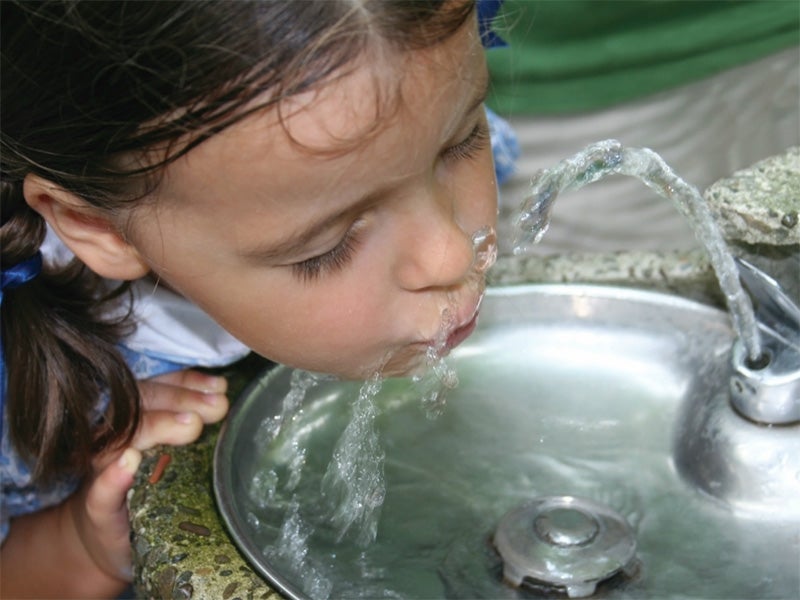EPA Announces Mandate to Replace All Lead Pipes Within 10 Years
Updated Lead and Copper Rule will finally require removal of lead service lines that deliver drinking water to almost 22 million people in the U.S.
Contact
Today, the Environmental Protection Agency’s (EPA) proposed amendments to the Lead and Copper Rule (LCR), established in 1991 and intended to regulate the control and monitoring of lead in drinking water. The proposed new rule requires water systems to replace all lead pipelines within 10 years (and faster when feasible), lowers the levels at which agencies must take additional steps to eliminate lead in drinking water, and contains provisions intended to improve accuracy in identifying where higher levels of lead in drinking water are within communities. EPA’s proposal comes in response to successful lawsuits by Earthjustice, its clients, and other partners, along with grassroots pressure from frontline communities around the country.
Any level of lead exposure presents risk to people of all ages. Even in small amounts, lead can cause irreversible brain damage in children, miscarriage, stillbirth, and cardiovascular disease. Congress knew the danger lead exposure presents when they banned installation of new lead service lines in 1986. Yet, there has been no meaningful progress in protecting communities under the LCR for decades. There are still as many as 10 million lead service lines in the country, and researchers estimate that these lead pipes deliver water to as many as 22 million people.
“The EPA’s proposed improvements to the Lead and Copper Rule are a much-needed response to a dire public health crisis that’s been ongoing for more than a century,” said Suzanne Novak, Earthjustice attorney. “The administration’s proposal takes important steps towards fulfilling the Safe Drinking Water Act’s purpose of protecting human health to the extent feasible. EPA has recognized that quick removal of all lead service lines is imperative, and that swift action is needed when a community has persistent high levels of lead in its water. Because the public health burden of lead exposure falls disproportionately on environmental justice communities, we need to make sure that the final rule is equitable in how it achieves reduction of lead in drinking water across the country.”
Delivery of water through lead pipes is an environmental justice issue. Communities of color and low-wealth families continue to face disproportionate exposure to lead in water because they are more likely to live in older homes with lead service lines. Lead is found in the blood of all U.S. children, but Black children have the highest body burden. A study by the Centers for Disease Control and Prevention (CDC) found that 11.2% of Black children and 4% of Mexican-American children are poisoned by lead.
In 2021, EPA released its updated — but flawed — LCR amendments, which took no steps towards eliminating all lead service lines and but rather dramatically slowed down the rate at which lead pipes were required to be replaced. It also allowed small public water systems that used to be required to replace lead service lines, to avoid replacing them altogether, even if those systems continually exceed the so-called lead action level. Earthjustice sued soon after. There were additional lawsuits filed by the Natural Resources Defense Council, and 10 attorneys general from nine states, and the District of Columbia.
Quotes from our clients:
“As a longstanding advocate for communities harmed by lead, I commend the EPA’s proposed improvements to the Lead and Copper Rule,” said Queen Zakia Shabazz, founder and executive director of United Parents Against Lead & Other Environmental Hazards, a nonprofit based in Richmond, Virginia. “Despite the passage of the Safe Drinking Water Act, for years we’ve seen the devastating effects of lead exposure, particularly on our children. These improvements signify hope and progress in ensuring safe drinking water for all, especially those disproportionately affected by lead contamination. While our work continues, this proposed rule is a crucial milestone in safeguarding children’s health.”
“Addressing lead contamination in our drinking water is fundamental to ensuring the well-being of our communities and safeguarding our natural resources,” said Sonya Lunder, senior toxics policy advisor at the Sierra Club. “This proposed rule, particularly the mandate for lead service line replacements and the improved requirements to educate the public, represents progress towards a safer, more sustainable future for all.”
“Communities like ours in Newburgh have grappled with the repercussions of lead contamination for too long,” said Deborah Brown, Newburgh Clean Water Project steering committee member. “The proposed improvements, especially the replacement of all lead service lines, signify a significant stride to safe and clean drinking water for our families and future generations. It’s a step in the right direction.”
“Safe potable water is a basic human right. “We agree with the EPA that this rule needed to be modified with the communities most impacted in mind,” said Janette McCarthy Wallace, General Counsel of the NAACP. We intend to hold the EPA to its word on 100% replacement of lead pipes within the next decade.”

Additional Resources
About Earthjustice
Earthjustice is the premier nonprofit environmental law organization. We wield the power of law and the strength of partnership to protect people's health, to preserve magnificent places and wildlife, to advance clean energy, and to combat climate change. We are here because the earth needs a good lawyer.